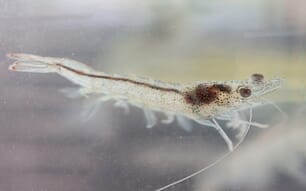These ecosystem-disrupting events have been fed by excess nitrogen runoff from the watershed, due largely to a continually growing population in the Baltimore-Washington corridor and the development of animal and plant agriculture in its watershed.
While algal blooms have long been of concern, this study is the first to document their increased frequency in the Bay and is a warning that more work is needed to reduce nutrient pollution entering the Bay's waters.
The harmful algae blooms addressed in this paper are happening in addition to the usual spring and summer temperature-dependent blooms that result in dead zones in the Bay.
"The increasing frequency and intensity of these harmful algae blooms will impact our ability to achieve the ultimate goal of restoring a healthy ecosystem in the Bay and put a premium on effective methods to reduce nutrient pollution," said Don Boesch, President of the University of Maryland Center for Environmental Science.
"This study points to the need for continued efforts to reduce the amount of nitrogen running off the land and into the Chesapeake Bay and its tributaries."
The Chesapeake Bay is not the only place facing such problems. Similar events are happening off the coast of China and in many parts of Europe.
"We're seeing this all over the world. More blooms, more often, lasting longer. In many places these trends are consistent with increased nitrogen loads," said study author Pat Glibert, professor at the University of Maryland's Horn Point Laboratory.
The study focused on three of the most common microscopic algae in the Chesapeake Bay that can produce toxic or nuisance conditions when they become very abundant. These are commonly known as harmful algal blooms, or HABs.
Two are caused by dinoflagellate species, Prorocentrum minimum and Kalrodinium veneficum, and the third by cyanobacteria, sometimes called blue-green algae.
The study examined water quality data collected by the Maryland Department of Natural Resources from 1991 through to 2008.
During this period, the average number of Prorocentrum minimum bloom events observed per year doubled. The blooms were more likely in May and resulted in the reddish waters most commonly known as 'mahogany tide.'
Such blooms are of increasing global concern and can severely reduce the amount of oxygen available to living things, kill fish and alter food webs.
The annual occurrences of Kalrodinium veneficum blooms have also increased significantly, from fewer than five events per year to more than 30 in the five-year time period from 2003 to 2008.
These blooms, also found worldwide, are more likely in the summer, produce a toxin that has been implicated in fish-kill events in the Chesapeake Bay, as well as being associated with failure of oyster spawning and development.
The frequency of blooms of cyanobacteria in the tidal waters of the Chesapeake estuary has increased from about 13 per year in the 1990s to 23 in the 2000s.
Cyanobacteria are the major causes of HABs in freshwater environments, a rapidly expanding global problem that threatens human and ecosystem health. It was cyanobacteria blooms in Lake Erie that last year required shutting down the water supply in Toledo, Ohio.
Knowledge from the study aids the broader understanding of the complex mechanisms that influence harmful algal bloom progression in bodies of water rich in organic nutrients such as phosphorus and nitrogen, and points to the direct need to reduce nutrient pollution in the face of both urban and agricultural development.
"There is a relationship with nutrients - as we change the nitrogen to phosphorus ratio we tend to create opportunities for these species to bloom," said Professor Glibert.
"We need to pay more attention to reducing nitrogen. We've made some progress but still have efforts to go."




